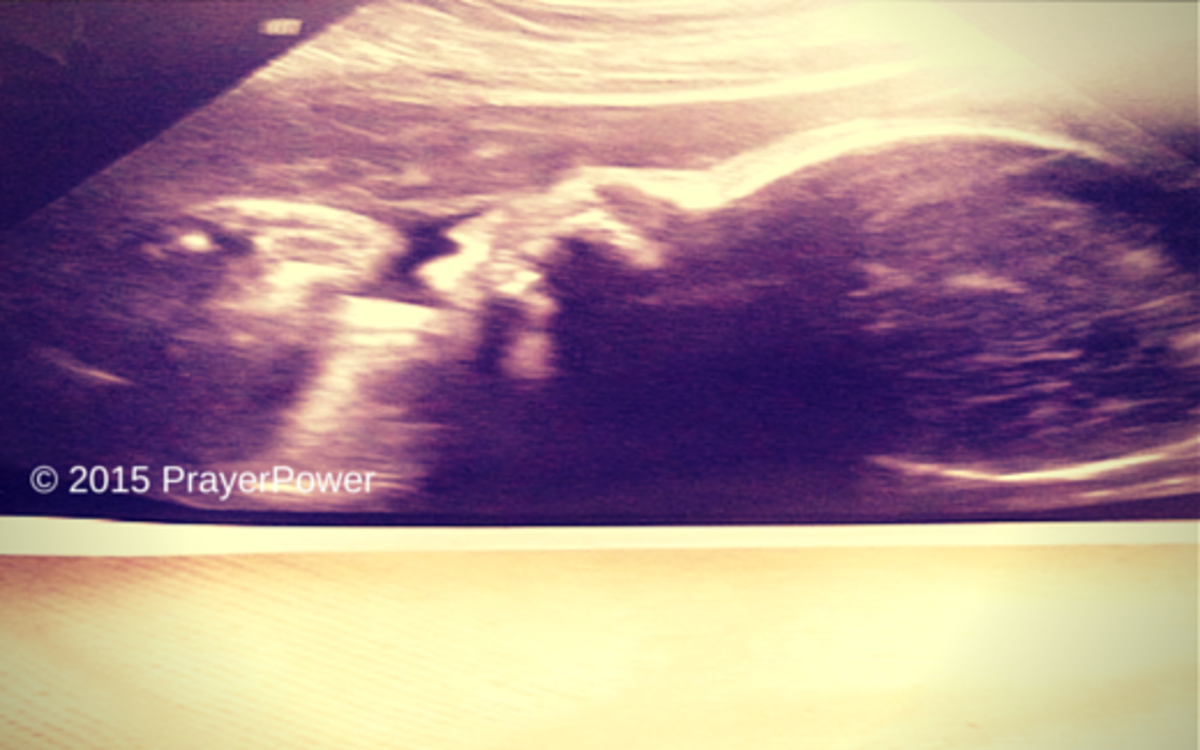- HubPages»
- Health»
- Women's Health»
- Pregnancy
A Doula Guide to Pharmaceutical Methods of Pain Relief in Labour - Pethidine, Opiates and Epidural Anaesthesia
Pain relief in labour
Preparation helps because labour is a time for shutting off the neo cortex, or thinking brain, to allow instinctive processes to work, and we always feel better about things if we feel we’ve explored all the avenues and made informed choices.
We are probably the only mammalian species to suffer pain during labour, and this is due to the aforementioned neo-cortex. Our cultural conditioning around birth leads us to approach it with fear.
The womb has conflicting roles of containment and opening and expulsion, with contraction of the longitudinal muscles, and relaxation of the horizontal muscles during labour.
Fear causes these muscles to tense up rather than the necessary relaxation. This tension causes the pain of labour, so anything that can help you to lessen fear and to be able to relax and ride the waves, will allow you to better cope with the overwhelming nature of labour.

What are the various drugs?
- Epidural block, containing local anaesthetics and sometimes opiates like fentanyl
- spinal block,
- pethidine, diamorphine, butorphanol, fentanyl, and other opiate derivatives in injection or pump,
- entonox (gas and air, laughing gas) which is inhaled are the most common drugs on the labour ward for pain relief.
Undisturbed birth
Epidural Anaesthesia
Epidural is one of the most popular because it is perceived that it doesn’t affect a woman’s level of consciousness, although a specific kind of consciousness (sometimes called 'labour-land') is part of the natural process of labour.
An epidural is achieved by the anaesthetist passing a small tube through a needle into the epidural space in the spinal column. Anaesthetic is pumped into this tube, and bathes the nerves which attach to the spinal cord. The nerves from the womb join the spine at the point where the epidural is sited, and this has the effect of blocking the pain messages heading from there to the brain. The anaesthetic can be topped up when necessary.
Side-effects of epidural anaesthesia
Epidural may only be partly effective, and leave a ’window’ of pain. Sometimes epidurals increase the length of labour, and affect the mother’s perception of it as she is confined to bed, with an additional intravenous catheter in case the epidural causes a sudden drop in blood pressure. Most women will need a urinary catheter as they lose the sensation of needing to empty their bladder.
The inhibitive effect epidural drugs have on the hormones in labour is an important consideration, as oxytocin, the hormone of bonding and love, is at its highest straight after birth when the mother is bonding with her newborn. Studies have shown (Rahm, Hallegren et al 2002) that with an epidural in place, oxytocin levels in labour are diminished, but also at birth the levels are lowered.
Epidurals have been shown to inhibit the physiological pattern of labour where it culminates in a short series of strong contractions to expel the baby. Instead, she may have to use her own effort to push, with the added disadvantage of being on her back unable to stand because she can’t feel her legs. This can result in more tearing and prolonged second stage, and results in an increased number of instrumental deliveries

Epidural Facts
Epidural drugs can reach the foetus via the mother’s bloodstream at equal and sometimes greater levels. (Brinsmead 1987; Fernando, Bonello et al 1997)
Sometimes an epidural is a necessary intervention and the birth is a satisfying experience for the mother who goes on to bond with her infant happily. The above studies show, however, that epidural anaesthetic is not without risk, or side-effects, which should be discussed by attending physicians and midwives and considered very carefully by the mother before labour starts.
Birth attendants can help by supporting the mother intensively during her most challenging times and have a number of natural methods of pain relief at their fingertips.
There can be a number of reasons why care-givers quickly suggest an epidural rather than take the time to explore other methods; sometimes they are uncomfortable with supporting a mother who is not in a sociable frame of mind and who might be yelling, grunting or crying. This is the time to remember, that labour, if painful, is pain with a purpose rather as opposed to suffering, as doula Penny Simkin has pointed out.
Pain Versus Suffering
Spinal block, how is it different from an epidural?
A spinal block is given into the same area of the back as an epidural block, but is given as a one-off anaesthetic for a caesarean section or instrumental delivery.
It is not administered via tube like epidurals, but is one injection into the back. It can result in headaches, sickness and difficulty with urinating afterwards, but it is quick and effective and allows the mother to stay awake during these procedures, and meet her baby immediately following birth.
Did your epidural affect the course of your labour?
Opiates for pain relief in labour
Opiates like diamorphine, pethidine, nalbuphine, butorphanol, fentanyl, and meperidine, are anaesthetic drugs. Pethidine and morphine are most commonly used in the United Kingdom, and are injected into the mother’s thigh or buttock muscle.
These drugs can be given by a midwife during a home birth. They can be given more than once, although it is worth bearing in mind that the narcotic (sleep-inducing) side-effect in the mother can be cumulative, rendering her sleepy following a labour where she has had several doses of the drug. This, and similar effects on the baby, means that opiates will interfere with the natural processes of bonding.
Where mothers have relied on their own painkilling beta-endorphines secreted by the brain, the time when they first hold their baby straight after birth, is one of great sensitivity to the newborn.
This is how natural bonding happens, as mother and baby look into each other’s eyes and discover one another’s skin and smell. Opiates have been found to inhibit natural production of beta-endorphines and oxytocin as well. (Thomas, Fletcher et al. 1982)
The drug takes a while to work, and lasts up to three hours, and it crosses the placenta and makes baby very sleepy after the birth. It is therefore very important that opiates are not administered to a mother who is close to birthing.
As well as causing drowsiness, opiates often have the side-effect of causing nausea, so are given in combination with anti-emetic medication.
would you opt for opiate pain relief again?
References
Thank-you to Dr Sarah Buckley's article 'Ecstatic Birth - Nature's hormonal blueprint for labor' for the study references.
- Rahm, V. A., A. Hallegren, et al (2002) "Plasma oxytocin levels in women during labour with or without epidural analgesia: a prospective study." Acta Obstet Gynecol Scand 81 (11): 1033-9
- Brinsmead, M. (1987). "Fetal and neonatal effects of drugs administered in labour." Med J Aust 146 (9): 481-6
- Fernando, R., E. Bonello, et al. (1997). "Neonatal welfare and placental transfer of fentanyl and bupivacaine during ambulatory combined spinal epidural analgesia for labour." Anaesthesia 52 (6): 517-24
- Thomas, T. A., J. E. Fletcher, et al. (1982). "Influence of medication, pain and progress in labour on plasma beta-endorphin-like immunoreactivity." Br J Anaesth 54 (4): 401-8
This content is for informational purposes only and does not substitute for formal and individualized diagnosis, prognosis, treatment, prescription, and/or dietary advice from a licensed medical professional. Do not stop or alter your current course of treatment. If pregnant or nursing, consult with a qualified provider on an individual basis. Seek immediate help if you are experiencing a medical emergency.
© 2012 Jil Wild Manning





